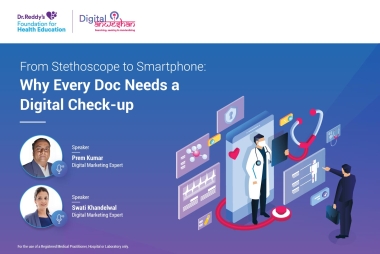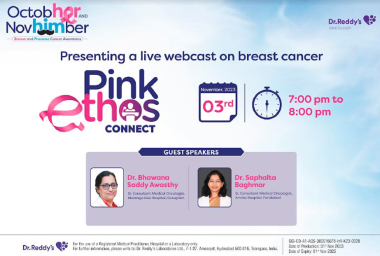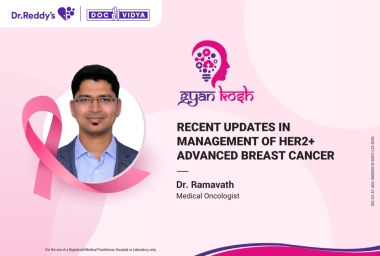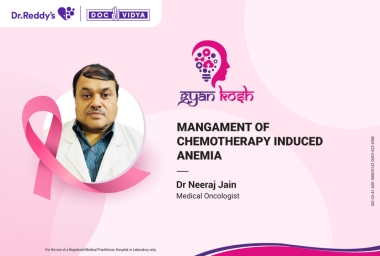test
test
test
test
test
test
test
test
test
test
Webinars
Videos
Recent Updates in management of HER2+ Advanced breast cancer by Dr. Rohit Rebello
Dr. Rohit Rebello talks about the updates in management of HER2+ Advanced breast cancer
Recent Updates in management of HER2+ Advanced breast cancer by Dr. Rohit Rebello
Dr. Rohit Rebello talks about the updates in management of HER2+ Advanced breast cancer
Recent Updates in management of HER2+ Advanced breast cancer by Dr. Rohit Rebello
Dr. Rohit Rebello talks about the updates in management of HER2+ Advanced breast cancer
Gyankosh
Recent Updates in management of HER2+ Advanced breast cancer
It’s a Video by Dr. Ramavath talking on recent updates in management of HER2+ Advanced...
Gyankosh
Recent Updates in management of HER2+ Advanced breast cancer
It’s a Video by Dr. Ramavath talking on recent updates in management of HER2+ Advanced...
Gyankosh
Recent Updates in management of HER2+ Advanced breast cancer
It’s a Video by Dr. Ramavath talking on recent updates in management of HER2+ Advanced...
Gyankosh
It’s a Video by Dr. Neeraj Jain talking on Mangament of chemotherapy induced Anemia
Courses
Medshorts

Better health-related quality of life with first-line nivolumab plus chemotherapy in patients with advanced/metastatic non-HER2-positive GC/GEJC/EAC
According to a recent study, first-line nivolumab plus chemotherapy increased overall survival in patients with advanced or metastatic esophageal adenocarcinoma (EAC) or gastric/gastroesophageal junction cancer (GC/GEJC) when compared to chemotherapy alone. This study’s results were published in the Journal of Clinical Oncology.
The CheckMate 649 trial included 1,581 patients who were concurrently randomly assigned to nivolumab plus chemotherapy or chemotherapy in a 1:1 ratio. The EQ-5D and Functional Assessment of Cancer Therapy-Gastric (FACT-Ga), which comprised the Gastric Cancer subscale (GaCS) and FACT-General (FACT-G), were used to measure health-related quality of life (HRQoL). Longitudinal changes in HRQoL were measured in the PRO analysis population which included patients with baseline and ≥1 postbaseline assessments.
It was found that in the PRO analysis population (n=1,360) PRO questionnaire completion rates were mostly >80% during treatment. Nivolumab plus chemotherapy did not result in an increase in the patient-reported symptom burden. Mean improved changes for FACT-Ga total, GaCS, and EQ-5D visual analog scale in patients with a combined positive score (CPS) of ≥5 from baseline were greater with nivolumab plus chemotherapy. Based on the FACT-Ga total score and GaCS, nivolumab plus chemotherapy decreased the risk of symptom deterioration compared to chemotherapy in CPS ≥5 and all randomly assigned populations. Also, the time to deterioration was longer and the risk of definitive deterioration in HRQoL was reduced with nivolumab plus chemotherapy.
Based on the above results, it can be concluded that first-line nivolumab plus chemotherapy may demonstrate stable or better on-treatment HRQoL in patients with advanced/metastatic non-HER2-positive GC/GEJC/EAC and may also show decreased risk of definitive HRQoL deterioration.

Better health-related quality of life with first-line nivolumab plus chemotherapy in patients with advanced/metastatic non-HER2-positive GC/GEJC/EAC
According to a recent study, first-line nivolumab plus chemotherapy increased overall survival in patients with advanced or metastatic esophageal adenocarcinoma (EAC) or gastric/gastroesophageal junction cancer (GC/GEJC) when compared to chemotherapy alone. This study’s results were published in the Journal of Clinical Oncology.
The CheckMate 649 trial included 1,581 patients who were concurrently randomly assigned to nivolumab plus chemotherapy or chemotherapy in a 1:1 ratio. The EQ-5D and Functional Assessment of Cancer Therapy-Gastric (FACT-Ga), which comprised the Gastric Cancer subscale (GaCS) and FACT-General (FACT-G), were used to measure health-related quality of life (HRQoL). Longitudinal changes in HRQoL were measured in the PRO analysis population which included patients with baseline and ≥1 postbaseline assessments.
It was found that in the PRO analysis population (n=1,360) PRO questionnaire completion rates were mostly >80% during treatment. Nivolumab plus chemotherapy did not result in an increase in the patient-reported symptom burden. Mean improved changes for FACT-Ga total, GaCS, and EQ-5D visual analog scale in patients with a combined positive score (CPS) of ≥5 from baseline were greater with nivolumab plus chemotherapy. Based on the FACT-Ga total score and GaCS, nivolumab plus chemotherapy decreased the risk of symptom deterioration compared to chemotherapy in CPS ≥5 and all randomly assigned populations. Also, the time to deterioration was longer and the risk of definitive deterioration in HRQoL was reduced with nivolumab plus chemotherapy.
Based on the above results, it can be concluded that first-line nivolumab plus chemotherapy may demonstrate stable or better on-treatment HRQoL in patients with advanced/metastatic non-HER2-positive GC/GEJC/EAC and may also show decreased risk of definitive HRQoL deterioration.


Better health-related quality of life with first-line nivolumab plus chemotherapy in patients with advanced/metastatic non-HER2-positive GC/GEJC/EAC
According to a recent study, first-line nivolumab plus chemotherapy increased overall survival in patients with advanced or metastatic esophageal adenocarcinoma (EAC) or gastric/gastroesophageal junction cancer (GC/GEJC) when compared to chemotherapy alone. This study’s results were published in the Journal of Clinical Oncology.
The CheckMate 649 trial included 1,581 patients who were concurrently randomly assigned to nivolumab plus chemotherapy or chemotherapy in a 1:1 ratio. The EQ-5D and Functional Assessment of Cancer Therapy-Gastric (FACT-Ga), which comprised the Gastric Cancer subscale (GaCS) and FACT-General (FACT-G), were used to measure health-related quality of life (HRQoL). Longitudinal changes in HRQoL were measured in the PRO analysis population which included patients with baseline and ≥1 postbaseline assessments.
It was found that in the PRO analysis population (n=1,360) PRO questionnaire completion rates were mostly >80% during treatment. Nivolumab plus chemotherapy did not result in an increase in the patient-reported symptom burden. Mean improved changes for FACT-Ga total, GaCS, and EQ-5D visual analog scale in patients with a combined positive score (CPS) of ≥5 from baseline were greater with nivolumab plus chemotherapy. Based on the FACT-Ga total score and GaCS, nivolumab plus chemotherapy decreased the risk of symptom deterioration compared to chemotherapy in CPS ≥5 and all randomly assigned populations. Also, the time to deterioration was longer and the risk of definitive deterioration in HRQoL was reduced with nivolumab plus chemotherapy.
Based on the above results, it can be concluded that first-line nivolumab plus chemotherapy may demonstrate stable or better on-treatment HRQoL in patients with advanced/metastatic non-HER2-positive GC/GEJC/EAC and may also show decreased risk of definitive HRQoL deterioration.

Effectiveness of alirocumab in treating pediatric patients with heterozygous familial hypercholesterolemia
According to a recent study, alirocumab may reduce low-density lipoprotein cholesterol (LDL-C) and other lipid parameters in pediatric patients with heterozygous familial hypercholesterolemia (HeFH) who have not achieved sufficient control with statins. This study’s findings were published in the journal, JAMA pediatrics.
In this phase 3, randomized clinical trial, 153 pediatric patients aged 8-17 years with HeFH, LDL-C levels of 130 mg/dL or higher, and undergoing statin or other lipid-lowering therapy (LLT) were randomly assigned to receive subcutaneous alirocumab or a placebo and dosed every 2 weeks (Q2W) or every 4 weeks (Q4W). The dosage depended on weight (if <50 kg then 40 mg for Q2W or 150 mg for Q4W; if ≥50 kg then 75 mg for Q2W or 300 mg for Q4W) and was adjusted at week 12 if LDL-C was 110 mg/dL or higher at week 8. Following the 24-week double-blind phase, patients could continue alirocumab treatment in an 80-week open-label phase. The primary endpoint of the study was the percentage change in LDL-C from baseline to week 24 in each group.
Alirocumab demonstrated statistically significant decreases in LDL-C compared to the placebo in both groups at week 24. The least squares mean difference in percentage change from baseline was -43.3% for the Q2W group and -33.8% for the Q4W group. A hierarchical analysis of secondary efficacy endpoints revealed notable enhancements in other lipid parameters at weeks 12 and 24 with alirocumab. The findings from the open-label period were consistent with those from the double-blind period.
Based on the above results, it can be concluded that alirocumab dosed every two weeks or every four weeks may lower LDL-C levels and improve other lipid parameters in pediatric patients with HeFH who have not achieved adequate control with statins.

Effectiveness of alirocumab in treating pediatric patients with heterozygous familial hypercholesterolemia
According to a recent study, alirocumab may reduce low-density lipoprotein cholesterol (LDL-C) and other lipid parameters in pediatric patients with heterozygous familial hypercholesterolemia (HeFH) who have not achieved sufficient control with statins. This study’s findings were published in the journal, JAMA pediatrics.
In this phase 3, randomized clinical trial, 153 pediatric patients aged 8-17 years with HeFH, LDL-C levels of 130 mg/dL or higher, and undergoing statin or other lipid-lowering therapy (LLT) were randomly assigned to receive subcutaneous alirocumab or a placebo and dosed every 2 weeks (Q2W) or every 4 weeks (Q4W). The dosage depended on weight (if <50 kg then 40 mg for Q2W or 150 mg for Q4W; if ≥50 kg then 75 mg for Q2W or 300 mg for Q4W) and was adjusted at week 12 if LDL-C was 110 mg/dL or higher at week 8. Following the 24-week double-blind phase, patients could continue alirocumab treatment in an 80-week open-label phase. The primary endpoint of the study was the percentage change in LDL-C from baseline to week 24 in each group.
Alirocumab demonstrated statistically significant decreases in LDL-C compared to the placebo in both groups at week 24. The least squares mean difference in percentage change from baseline was -43.3% for the Q2W group and -33.8% for the Q4W group. A hierarchical analysis of secondary efficacy endpoints revealed notable enhancements in other lipid parameters at weeks 12 and 24 with alirocumab. The findings from the open-label period were consistent with those from the double-blind period.
Based on the above results, it can be concluded that alirocumab dosed every two weeks or every four weeks may lower LDL-C levels and improve other lipid parameters in pediatric patients with HeFH who have not achieved adequate control with statins.


Effectiveness of alirocumab in treating pediatric patients with heterozygous familial hypercholesterolemia
According to a recent study, alirocumab may reduce low-density lipoprotein cholesterol (LDL-C) and other lipid parameters in pediatric patients with heterozygous familial hypercholesterolemia (HeFH) who have not achieved sufficient control with statins. This study’s findings were published in the journal, JAMA pediatrics.
In this phase 3, randomized clinical trial, 153 pediatric patients aged 8-17 years with HeFH, LDL-C levels of 130 mg/dL or higher, and undergoing statin or other lipid-lowering therapy (LLT) were randomly assigned to receive subcutaneous alirocumab or a placebo and dosed every 2 weeks (Q2W) or every 4 weeks (Q4W). The dosage depended on weight (if <50 kg then 40 mg for Q2W or 150 mg for Q4W; if ≥50 kg then 75 mg for Q2W or 300 mg for Q4W) and was adjusted at week 12 if LDL-C was 110 mg/dL or higher at week 8. Following the 24-week double-blind phase, patients could continue alirocumab treatment in an 80-week open-label phase. The primary endpoint of the study was the percentage change in LDL-C from baseline to week 24 in each group.
Alirocumab demonstrated statistically significant decreases in LDL-C compared to the placebo in both groups at week 24. The least squares mean difference in percentage change from baseline was -43.3% for the Q2W group and -33.8% for the Q4W group. A hierarchical analysis of secondary efficacy endpoints revealed notable enhancements in other lipid parameters at weeks 12 and 24 with alirocumab. The findings from the open-label period were consistent with those from the double-blind period.
Based on the above results, it can be concluded that alirocumab dosed every two weeks or every four weeks may lower LDL-C levels and improve other lipid parameters in pediatric patients with HeFH who have not achieved adequate control with statins.

Efficacy and safety of mirvetuximab soravtansine-gynx in the treatment of platinum-resistant ovarian cancer
A recent study found that mirvetuximab soravtansine-gynx (MIRV) targeting folate receptor α (FRα) showed a significant benefit over chemotherapy in the treatment of platinum-resistant, high-grade serous ovarian cancer. This study’s results were published in The New England Journal of Medicine.
This phase 3, global, confirmatory, open-label, randomized, controlled trial included 453 participants who were randomized in a 1:1 ratio to receive 6 mg per kilogram of adjusted ideal body weight of MIRV every 3 weeks (N=227) or chemotherapy that included paclitaxel, pegylated liposomal doxorubicin, or topotecan (n=226). The primary end point of the study was progression-free survival. The key secondary analytic end points of the study included overall survival, objective response, and participant-reported outcomes.
It was observed that the median progression-free survival with MIRV and chemotherapy was 5.62 months and 3.98 months, respectively. An objective response occurred in 42.3% and 15.9% of the participants in the MIRV and chemotherapy groups, respectively. The overall survival was found to be significantly longer with MIRV than with chemotherapy (16.46 months vs. 12.75 months). Similarly, during the treatment period, fewer adverse events of grade 3 or above, SAEs (serious adverse events) of any grade, and events leading to discontinuation, occurred with MIRV compared to chemotherapy.
Based on the above results, it can be concluded that treatment with MIRV may show a significant benefit with respect to progression-free survival, overall survival, and objective response among participants with platinum-resistant, FRα-positive ovarian cancer. Thus, it may be safe and efficacious for use.

Efficacy and safety of mirvetuximab soravtansine-gynx in the treatment of platinum-resistant ovarian cancer
A recent study found that mirvetuximab soravtansine-gynx (MIRV) targeting folate receptor α (FRα) showed a significant benefit over chemotherapy in the treatment of platinum-resistant, high-grade serous ovarian cancer. This study’s results were published in The New England Journal of Medicine.
This phase 3, global, confirmatory, open-label, randomized, controlled trial included 453 participants who were randomized in a 1:1 ratio to receive 6 mg per kilogram of adjusted ideal body weight of MIRV every 3 weeks (N=227) or chemotherapy that included paclitaxel, pegylated liposomal doxorubicin, or topotecan (n=226). The primary end point of the study was progression-free survival. The key secondary analytic end points of the study included overall survival, objective response, and participant-reported outcomes.
It was observed that the median progression-free survival with MIRV and chemotherapy was 5.62 months and 3.98 months, respectively. An objective response occurred in 42.3% and 15.9% of the participants in the MIRV and chemotherapy groups, respectively. The overall survival was found to be significantly longer with MIRV than with chemotherapy (16.46 months vs. 12.75 months). Similarly, during the treatment period, fewer adverse events of grade 3 or above, SAEs (serious adverse events) of any grade, and events leading to discontinuation, occurred with MIRV compared to chemotherapy.
Based on the above results, it can be concluded that treatment with MIRV may show a significant benefit with respect to progression-free survival, overall survival, and objective response among participants with platinum-resistant, FRα-positive ovarian cancer. Thus, it may be safe and efficacious for use.


Efficacy and safety of mirvetuximab soravtansine-gynx in the treatment of platinum-resistant ovarian cancer
A recent study found that mirvetuximab soravtansine-gynx (MIRV) targeting folate receptor α (FRα) showed a significant benefit over chemotherapy in the treatment of platinum-resistant, high-grade serous ovarian cancer. This study’s results were published in The New England Journal of Medicine.
This phase 3, global, confirmatory, open-label, randomized, controlled trial included 453 participants who were randomized in a 1:1 ratio to receive 6 mg per kilogram of adjusted ideal body weight of MIRV every 3 weeks (N=227) or chemotherapy that included paclitaxel, pegylated liposomal doxorubicin, or topotecan (n=226). The primary end point of the study was progression-free survival. The key secondary analytic end points of the study included overall survival, objective response, and participant-reported outcomes.
It was observed that the median progression-free survival with MIRV and chemotherapy was 5.62 months and 3.98 months, respectively. An objective response occurred in 42.3% and 15.9% of the participants in the MIRV and chemotherapy groups, respectively. The overall survival was found to be significantly longer with MIRV than with chemotherapy (16.46 months vs. 12.75 months). Similarly, during the treatment period, fewer adverse events of grade 3 or above, SAEs (serious adverse events) of any grade, and events leading to discontinuation, occurred with MIRV compared to chemotherapy.
Based on the above results, it can be concluded that treatment with MIRV may show a significant benefit with respect to progression-free survival, overall survival, and objective response among participants with platinum-resistant, FRα-positive ovarian cancer. Thus, it may be safe and efficacious for use.














